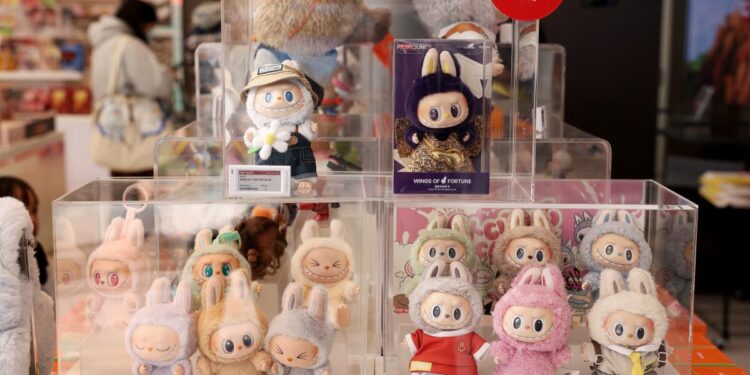U.S. Customs and Border Protection officers in Seattle seized 11,134 counterfeit Labubu dolls valued at more than half a million dollars in a recent enforcement operation targeting fake collectible toys.
The confiscated items carried an estimated value of $513,937.76, according to the agency. CBP officers identified the dolls as counterfeit versions of the popular collectible toys that have become trending fashion accessories and sought-after collector items.
“Excellent work by our diligent and meticulous CBPOs!” wrote Brian Humphrey, Director of Field Operations for CBP Seattle Field Office, in a social media post Friday. Humphrey referenced internet memes surrounding the toys, jokingly adding, “We’re still on the lookout for the one and only 24K GOLD Labubu.”
The main CBP account responded to the Seattle office’s announcement, stating: “Fake Labubus are not welcome in America. Thanks for the good catch Seattle!”
Labubu dolls have gained significant popularity recently, with authentic versions typically priced between $40 and $2,000 depending on rarity and design variations. The toys serve dual purposes as fashion accessories and collectible items, driving demand that counterfeiters attempt to exploit.
The collectible market has seen dramatic price increases, with the most expensive authentic Labubu selling for $10,500 on eBay in July, demonstrating the substantial value driving counterfeiting operations.
Counterfeit goods pose multiple concerns beyond intellectual property violations, including potential safety risks from substandard materials and manufacturing processes. Fake collectibles also undermine legitimate markets and can deceive consumers who believe they’re purchasing authentic items.
The Seattle seizure reflects broader customs enforcement efforts targeting counterfeit luxury goods and collectibles entering U.S. ports. Such operations protect consumers from fraudulent products whilst supporting legitimate businesses and intellectual property rights.
CBP’s social media engagement around the seizure highlights how enforcement agencies adapt their communication strategies to connect with public interest in trending topics, using humour to draw attention to serious intellectual property enforcement work.
The significant quantity of fake dolls suggests organised counterfeiting operations attempting to flood the U.S. market with fraudulent versions of the popular collectibles during peak demand periods.







